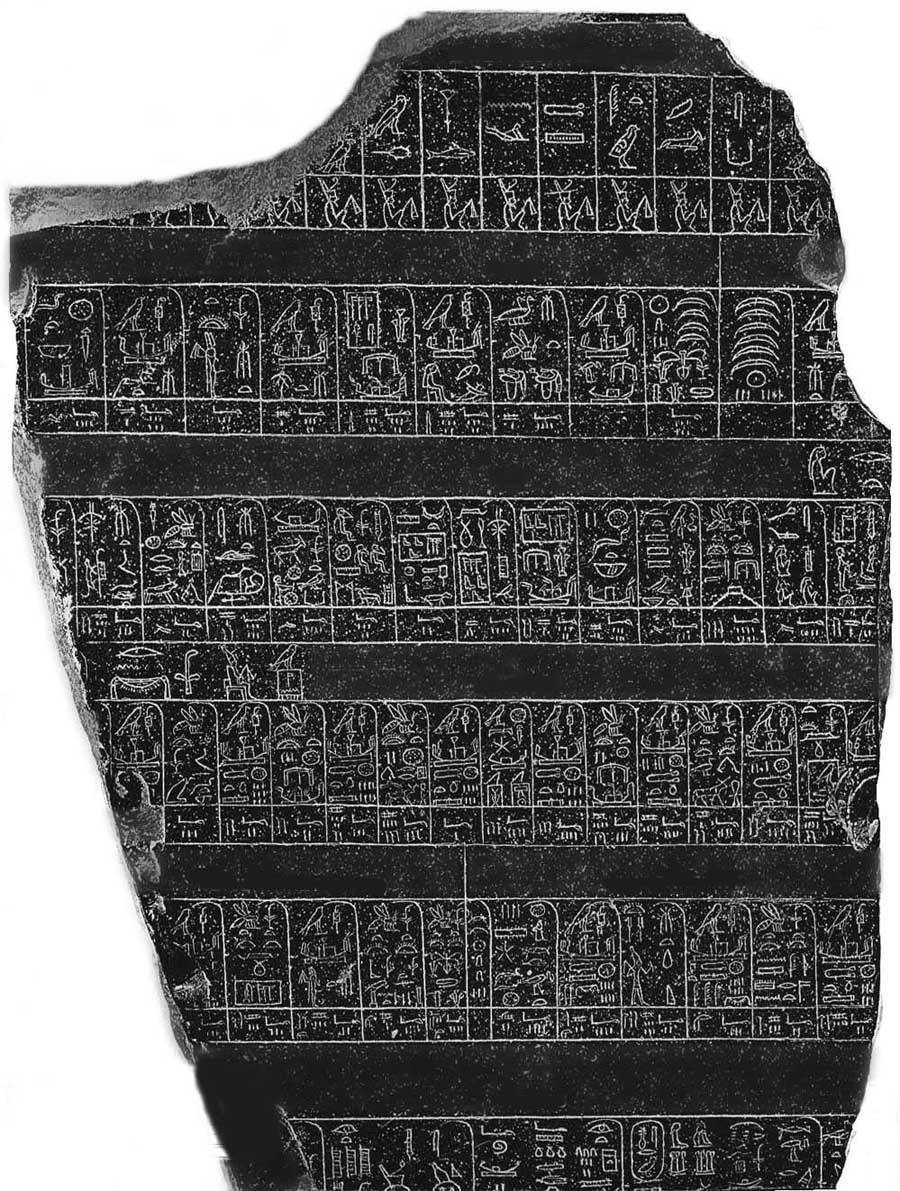
The Palermo Stone is an ancient Egyptian stela of black basalt engraved toward the end of the 5th dynasty (twenty-fifth century BC). It is probably the earliest Egyptian historical text. Now in a number of fragments, it details the reigns of the first Egyptian kings through the middle of the 5th dynasty and was doubtless among the documents Manetho used to construct his dynastic chronology. Unfortunately, most of the information concerning the first and second dynasties has not survived.
The main fragment has been in Palermo since 1866, though it was discovered by a visiting French archaeologist in 1895 and first published, by Heinrich Schafer, in 1902. It is currently in the collection of the Palermo Archeological Museum, Sicily, although there are also further sizeable pieces in the Egyptian Museum, Cairo, one discovered in 1910 another purchased on the market as recently as 1963, and in the museum of University College London, given by Sir Flinders Petrie. The engraved stone must originally have been about 2.2 m long, 0.61 m wide and 6.5 cm thick, but most of it is now missing, and there is no surviving information about its provenance, though a further fragment was excavated at Memphis
It is a hieroglyphic list of the kings of ancient Egypt before and after Menes, with regnal years and notations of events. It also includes such information as the height of the flooding of the Nile in various years, (see nilometer), information on cult ceremonies, taxation, sculpture, buildings and warfare.
Many king lists that exist from later dates, such as the Turin Canon (13th century BCE) and the Karnak List of Kings, identify Menes (c. 3100/3000) as the first king of the first Dynasty and credit him with unifying Egypt. However, the Palermo Stone, which is substantially older, lists rulers that predate Menes. It seems to indicate that the unification of Egypt occurred earlier than Menes' rule and that he simply reunited the nation after a period of fragmentation. Scholars are divided on how to interpret the implications of the stone. Some believe the earlier kings existed historically while others believe that their inclusion in the king list has only ideological value (i.e., there must have been disorder before order).
The king list covers the period from the Old Kingdom back thousands of years into the predynastic period. It chronicles these mythical kings until the time of the god Horus, who is said to have given the throne to the human king, Menes. Then, hundreds of rulers are listed up to the 5th dynasty. The rows of compartments, containing inscriptions summarizing the main events of a particular year, are each separated by the Hieroglyph rempet, signifying a regnal year of the king. However, it is likely that the stone actually refers to biennial cattle censuses, rather then the actual number of years that the king reigned.
The information is similar to that recorded on the ebony labels found at Abydos, Saqqara and other historical sites. However, these labels include clerical information, while the Palermo Stone does not, and the Palermo Stone includes records of Nile inundation, but not the labels.
Other interesting information recorded by the Palermo stone is the construction of a stone building called Men-netjeret, either in the reign of Khasekhemwy, the last ruler of the 2nd Dynasty, or Djoser's predecessor, Nebka (2686-2667 BC). Modern Egyptologists belive this may be the same structure known as Gisr el-Mudir at North Saqqara, which was never finished. However, it would predate Djoser's Styp Pyramid, which is commonly credited as being the first large stone building.
The Palermo Stone also records that copper smelting was already taking place, and copper statues were being created in the 2nd Dynasty (about 2890-2686 BC). It also documents a number of early gods, such as Min, a fertility god and symbol of male potency, and Heryshef (Arsaphes), also a fertility god usually represented in the form of a ram, or ram headed man.
The Stone also contains a record of forty ships that brought wood from an unknown region outside of Egypt during the reign of Sneferu. It is a good source of information on Sneferu, also describing military expeditions such as campaign in Nubia that resulted in the capture of 7,000 slaves and 200,000 head of cattle. These types of campaigns probably resulted in the disappearance of the local Nubian culture known as the A Group. It also tells of his campaigns against the Libyans, and quarrying expeditions to the Turquoise mines of the Sinai.




0 comments:
Post a Comment